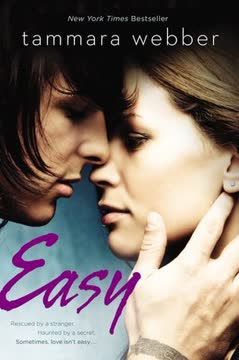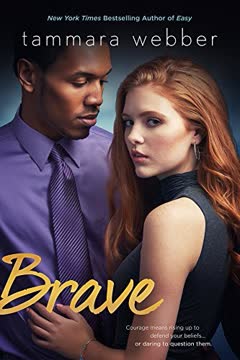Plot Summary
Shattered Beginnings
Thirteen-year-old Landon Maxfield's life is torn apart when his mother is murdered during a home invasion. The trauma leaves him wracked with guilt, believing he failed to protect her as his father had asked. The aftermath is a blur of grief, silence, and isolation, as Landon and his father move from Virginia to the Gulf Coast, seeking escape but finding only more emptiness. Landon's sense of safety and belonging is shattered, and he withdraws from friends, school, and the activities that once defined him. The pain of loss becomes the lens through which he views the world, setting the stage for years of struggle with identity, trust, and the possibility of healing.
Drawing the Unseen
In the wake of tragedy, Landon turns to drawing as both comfort and escape. His mother's encouragement of his artistic talent becomes a lifeline, a way to process the chaos inside him. As he grows, his sketches shift from childhood whimsy to intricate, often dark, renderings of the world around him. Art is his meditation, his means of relating to a reality that feels hostile and unpredictable. It's also a mask—he hides behind his sketchbook, observing but rarely participating, using creativity to keep others at a distance. This habit of watching, not engaging, will shape his relationships and his journey toward connection.
Ghosts of the Past
Landon's adolescence is marked by the weight of his mother's death and his father's emotional absence. The move to his grandfather's house on the Gulf Coast offers no relief; instead, Landon feels like an outsider, both at home and at school. He's bullied, misunderstood, and increasingly isolated, his pain manifesting in sleepless nights and self-destructive thoughts. The scars on his wrists—hidden beneath bands and tattoos—are both literal and symbolic, reminders of a promise broken and a childhood lost. The ghosts of his past threaten to consume him, making trust and hope seem impossible.
Surviving the Aftermath
As Landon navigates high school, he's caught between the expectations of others and his own fractured sense of self. He forms a tenuous friendship with Boyce Wynn, a fellow outcast, and experiences fleeting connections with girls like Melody Dover, but intimacy is always shadowed by fear and shame. Violence becomes both a defense and a release, as Landon's anger simmers beneath the surface. His relationship with his father remains strained, each man locked in his own grief. Yet, amid the chaos, Landon's resilience begins to surface—he survives, if not yet fully living.
Becoming Lucas
When Landon leaves for college, he seizes the chance to become someone new. He adopts his middle name, Lucas, and crafts a persona that is both armor and aspiration: tattooed, pierced, aloof, and fiercely independent. Lucas is the version of himself who can't be hurt, who doesn't need anyone. He finds a home with the Heller family, who offer warmth and acceptance, but he keeps them at arm's length, afraid to let anyone see the brokenness beneath. College is a fresh start, but the past is never far behind, and Lucas's carefully constructed identity is as fragile as the boy he left behind.
The Girl with Music Hands
In a crowded lecture hall, Lucas notices a girl whose fingers move as if playing invisible music. Jackie Wallace is beautiful, but it's her quiet intensity and the way she seems both present and elsewhere that captivate him. Despite his resolve to remain detached, Lucas finds himself sketching her, drawn to her in ways he can't explain. Jackie's relationship with her boyfriend, Kennedy, and her own struggles with belonging mirror Lucas's internal battles. Their paths cross in unexpected ways, and Lucas's fascination grows into something deeper—a longing for connection that terrifies and exhilarates him.
Bruises and Bonds
When Lucas intervenes to stop an assault on Jackie at a frat party, he's forced to confront the violence within himself and the limits of his control. The incident leaves Jackie shaken and Lucas haunted by his inability to prevent harm. Their shared trauma becomes a fragile bond, but both are wary—Jackie of trusting another man, Lucas of being seen as a savior or a threat. As they navigate the aftermath, Lucas's role as her economics tutor complicates their dynamic, blurring lines between protector, teacher, and potential lover. The bruises they carry—visible and invisible—draw them together even as they threaten to pull them apart.
Fists and Forgiveness
Lucas's past and present collide as he faces bullies, both in high school and college, and grapples with the consequences of his own anger. Fights with Boyce, confrontations with Kennedy, and the ever-present threat of violence test his commitment to change. Through martial arts, Lucas learns discipline and the value of restraint, channeling his pain into something constructive. Forgiveness—of others and himself—remains elusive, but moments of grace begin to appear. The support of the Hellers, the camaraderie of friends like Joseph, and the tentative trust of Jackie offer glimpses of a life beyond survival.
Bad Boys and Boundaries
As Lucas and Jackie grow closer, rumors swirl about her "bad-boy phase" and his suitability as a partner. Both are navigating the aftermath of broken relationships—Jackie's with Kennedy, Lucas's with his own past. Their attraction is electric but fraught with fear: of being hurt, of hurting each other, of repeating old patterns. Boundaries are tested and redrawn as they explore physical and emotional intimacy. The line between healing and harm is razor-thin, and both must decide what they're willing to risk for love.
Unraveling Secrets
The web of lies and omissions—about names, identities, and histories—threatens to unravel everything Lucas and Jackie have built. When Jackie discovers Lucas's dual identity as her tutor and her rescuer, the betrayal cuts deep. Both must confront the ways they've hidden from each other and themselves. Apologies are offered, but forgiveness is hard-won. The process of coming clean is painful, but it opens the door to genuine connection. Only by facing the truth can they hope to move forward together.
The Art of Healing
With the past laid bare, Lucas and Jackie begin the slow work of healing. Therapy, self-defense classes, and honest conversations become tools for reclaiming agency and rebuilding trust. Lucas learns to forgive himself for his mother's death, recognizing that he was a child, not a failed protector. Jackie finds strength in her own resilience and the support of friends. Together, they discover that love is not the absence of pain, but the willingness to face it—together. Art, music, and shared vulnerability become the foundation of a new life.
Facing the Darkness
The return of Jackie's attacker forces Lucas to confront the darkest parts of himself and his history. In a climactic confrontation, he chooses protection over vengeance, channeling his rage into action that saves rather than destroys. The experience cements the bond between Lucas and Jackie, but also underscores the ongoing nature of healing. The past will always be a part of them, but it no longer defines them. Together, they face the future with courage, knowing that darkness can be met with light.
Love, Loss, and Letting Go
Graduation, new jobs, and the prospect of long-distance love test Lucas and Jackie's commitment. Both must let go of old identities and embrace the uncertainty of what comes next. Family, friends, and the lessons of the past provide support, but the future is theirs to shape. The journey from brokenness to wholeness is ongoing, but they face it together, choosing hope over fear. In loving each other, they learn to love themselves, and the world opens up in ways they never imagined.
Forgiveness and Futures
Lucas and Jackie's story ends not with a fairy-tale resolution, but with the promise of a future built on honesty, resilience, and mutual respect. They have faced trauma, betrayal, and loss, but have emerged stronger and more compassionate. Their love is not perfect, but it is real—a testament to the power of vulnerability and the possibility of redemption. As they drive toward a new life, they carry the lessons of the past with them, but are no longer defined by it. The future is uncertain, but they face it—together.
Characters
Landon/Lucas Maxfield
Landon is a sensitive, artistic soul whose life is shattered by his mother's violent death. Wracked with guilt and haunted by the belief that he failed to protect her, he withdraws into himself, using art as both solace and shield. His adolescence is marked by isolation, anger, and self-destructive impulses, but also by a fierce resilience. Reinventing himself as Lucas in college, he adopts a tough exterior—tattoos, piercings, and emotional distance—to hide his vulnerability. Lucas is deeply loyal, protective, and capable of great empathy, but struggles to trust and forgive himself. His journey is one of learning to accept love, confront his past, and believe in the possibility of healing.
Jacqueline "Jackie" Wallace
Jackie is a talented musician whose quiet strength belies a history of heartbreak and trauma. Initially defined by her long-term relationship with Kennedy, she struggles with identity and belonging after their breakup. The assault she endures is a turning point, forcing her to confront her fears and reclaim agency over her life. Jackie is introspective, compassionate, and determined, but also vulnerable to self-doubt and the judgments of others. Her relationship with Lucas challenges her to trust again, set boundaries, and embrace her own desires. Through music, friendship, and love, she learns to move beyond survival and toward self-empowerment.
Ray Maxfield (Landon's Father)
Ray is a brilliant but emotionally distant father, devastated by his wife's murder. Unable to process his own pain, he withdraws from his son, leaving Landon to navigate trauma alone. His silence and stoicism are both a shield and a prison, perpetuating cycles of guilt and isolation. Over time, Ray's love for his son is revealed in small gestures and eventual attempts at reconciliation. His journey mirrors Landon's—a struggle to forgive, connect, and find meaning after loss.
Charles Heller
Charles is the father of Landon's childhood friend and a professor at the university. He provides the stability, guidance, and unconditional support that Landon's own father cannot. Charles is wise, compassionate, and unafraid to challenge those he loves. He recognizes Landon's pain and offers both tough love and practical help, including a place to live and a path to healing. His presence is a reminder that family can be chosen as well as given.
Cindy Heller
Cindy is Charles's wife and a maternal figure for Landon. She is empathetic, intuitive, and fiercely protective of those she loves. Cindy recognizes the signs of trauma in Landon and advocates for therapy and support, even when others resist. Her warmth and acceptance provide a safe haven, and her belief in Landon's worth is instrumental in his recovery.
Boyce Wynn
Boyce is Landon's high school friend and occasional nemesis, a tough, street-smart survivor with his own scars. Their relationship is built on shared experiences of pain, violence, and marginalization. Boyce is brash, loyal, and often reckless, but his friendship offers Landon both camaraderie and a mirror for his own struggles. Boyce's journey is one of learning to channel his aggression and find meaning beyond survival.
Melody Dover
Melody is Landon's high school crush, representing both the possibility of connection and the pain of rejection. Their brief relationship is marked by miscommunication, betrayal, and the limitations of youth. Melody's choices force Landon to confront his own worth and the dangers of seeking validation from others. She is both a catalyst for growth and a reminder of the wounds that must be healed from within.
Kennedy Moore
Kennedy is Jackie's long-term boyfriend, embodying privilege, entitlement, and emotional unavailability. His breakup with Jackie triggers her journey of self-discovery, and his actions—both before and after—highlight the dangers of seeking identity through another person. Kennedy's inability to see Jackie's worth is contrasted with Lucas's attentive, empathetic love.
Buck (The Antagonist)
Buck is the man who assaults Jackie and later attacks her again. He represents the ever-present threat of violence and the ways in which trauma can resurface. Buck's actions force both Jackie and Lucas to confront their deepest fears and test the limits of their strength. His eventual defeat is both a literal and symbolic victory over the past.
Erin
Erin is Jackie's roommate and confidante, providing unwavering support in the aftermath of trauma. She is practical, loyal, and unafraid to challenge Jackie when necessary. Erin's presence underscores the importance of friendship, community, and solidarity in the healing process.
Plot Devices
Dual Timeline and Perspective
The novel alternates between Landon's/Lucas's past and present, using dual timelines to reveal the origins of his trauma and the evolution of his identity. This structure allows readers to experience the full weight of his journey, understanding how past wounds inform present choices. The shifting perspective—from Landon's haunted adolescence to Lucas's guarded adulthood—creates suspense, empathy, and a sense of inevitability as the two selves converge.
Art and Music as Metaphor
Drawing and music are not just hobbies for the protagonists; they are lifelines, means of processing pain, and bridges to intimacy. Lucas's sketches of Jackie are both an act of longing and a way to see her fully, while Jackie's music is a source of strength and self-definition. These artistic pursuits symbolize the possibility of transformation—turning suffering into beauty, isolation into connection.
Trauma and Recovery
The narrative does not shy away from the messy, cyclical nature of trauma. Flashbacks, nightmares, and triggers are woven throughout, illustrating how the past intrudes on the present. Recovery is depicted as a process, not a destination, requiring support, self-compassion, and the courage to face darkness. The use of therapy, self-defense, and honest conversation grounds the story in reality, offering hope without false promises.
Secrets, Lies, and Revelation
The plot is driven by secrets—about identity, history, and emotion. Lucas's dual identity as Landon and Lucas, his hidden trauma, and the unspoken pain between characters create tension and drive the narrative forward. The eventual revelation of these secrets is both cathartic and destabilizing, forcing characters to confront the consequences of deception and the necessity of vulnerability.
Symbolic Violence and Redemption
Fights, both literal and metaphorical, are central to the story. Violence is depicted not as glorified, but as a symptom of pain and a catalyst for growth. The climactic confrontation with Buck is both a test of Lucas's restraint and a moment of redemption—choosing protection over vengeance, healing over harm. The resolution is not the erasure of violence, but its transformation into agency and self-respect.
Foreshadowing and Circularity
The narrative is rich with foreshadowing—promises made and broken, patterns repeated and disrupted. The story's structure is circular, beginning and ending with journeys—literal and emotional—toward new beginnings. The past is never fully left behind, but it is integrated, allowing for growth and the possibility of happiness.
Analysis
Breakable is a raw, unflinching exploration of trauma, identity, and the arduous path to healing. Through the dual lens of Landon's haunted adolescence and Lucas's guarded adulthood, Tammara Webber crafts a narrative that is both deeply personal and universally resonant. The novel's power lies in its refusal to offer easy answers: healing is depicted as nonlinear, love as both risk and refuge, and forgiveness as a hard-won, ongoing process. By centering art and music as vehicles for self-expression and connection, the story honors the ways in which creativity can transform pain into beauty. The relationship between Lucas and Jackie is a testament to the necessity of vulnerability, the courage to face darkness, and the redemptive power of being truly seen. Ultimately, Breakable is a story about reclaiming agency, embracing imperfection, and choosing hope in the face of overwhelming odds—a message that resonates in a world where so many are, in their own ways, breakable, but not beyond repair.
Last updated:
Review Summary
Breakable received mixed reviews from readers. Many praised Lucas's backstory and enjoyed seeing events from his perspective, though some found the alternating timelines disruptive. Fans appreciated the deeper exploration of Lucas's character and past trauma. However, some felt the book was unnecessary or repetitive of Easy. The audiobook narration by Zachary Webber was highly praised. Overall, readers who loved Easy and Lucas as a character tended to enjoy Breakable, while others found it less engaging than the original.









